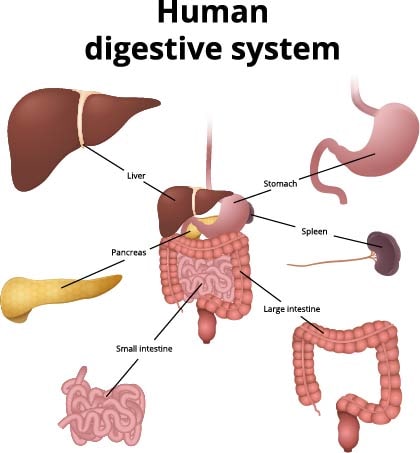
The gastrointestinal system (GI) tract serves as another battleground of root cause mold toxicity. Mold attacks in a variety of ways on this battleground which is intimately connected to the fight in other body systems. First, mold toxins often trigger intestinal hyperpermeability otherwise known as leaky gut. As toxins pass through the intestines, they can trigger histamine release from mast cells. This process further contributes to leaky gut. Second, mold toxins may cause direct damage to the cells lining the GI tract. This furthers inflammation and leaky gut severity. Third, mold toxins sometimes disrupt the normal bacterial balance in the gut. The gut lining then loses this normally protective bacterial layer. Fourth, mold may trigger food sensitivities via the immune system and this then amplifies the histamine release and intensifies leaky gut. The different system effects are interconnected in multiple ways.
The gut lining inflammation and leakiness then hinders the GI tract from proper functioning. Digestion may not fully process foods, causing key nutrients to pass through unabsorbed. With imbalances in good gut bacteria, detoxification of other environmental toxins may falter, allowing the toxic load to increase. With bacteria imbalances, harmful bacteria can increase and release various substances that harm local and distant body regions. Then with a growing number of food sensitivities, nutrient deficiencies become inevitable when patients are limited to only a few tolerated foods. Given the GI tract’s connection to every other body system and their proper functioning, it is easy to see how mold’s attacks here could influence the whole person’s well-being.
